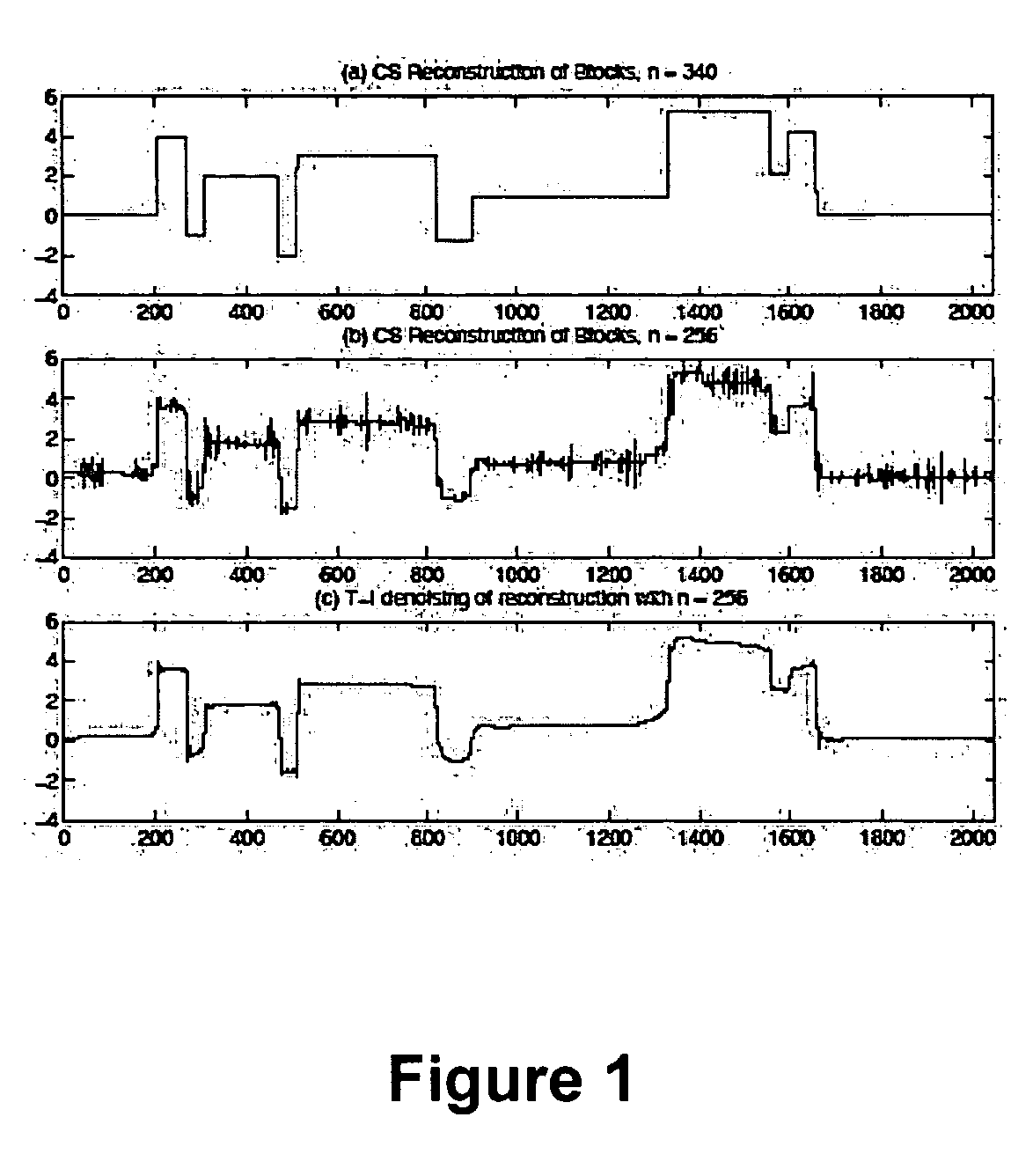Method and apparatus for compressed sensing
- Summary
- Abstract
- Description
- Claims
- Application Information
AI Technical Summary
Benefits of technology
Problems solved by technology
Method used
Image
Examples
example
[0091]FIG. 1 shows an example of compressed sensing in action. The signal Blocks, available in Wavelab (see J. Buckheit, D. Donoho, Wavelab and reproducible research in Wavelets and Statistics, Ed. Anestis Antoniadis Springer-Verlag Lecture Notes (1995)), has m=2048 and would traditionally need 2048 samples. However, Blocks is sparse when analysed in the Haar wavelet basis, essentially because of its piecewise constant character.
[0092]FIG. 1 shows the result of CS applied to this signal, with a matrix A having iid Gaussian entries, and using minimum I1 norm reconstruction. Even though only n=340 samples are taken, the result of length 2048 is perfectly reconstructed. That is, in this case, if we had shown both the original object and the reconstructed one, there would be no difference; hence we display on the reconstruction.
[0093] On the other hand, if only n=256 samples had been taken, the same approach would have given a noisy reconstruction, as can be seen from the second panel...
PUM
 Login to View More
Login to View More Abstract
Description
Claims
Application Information
 Login to View More
Login to View More - R&D
- Intellectual Property
- Life Sciences
- Materials
- Tech Scout
- Unparalleled Data Quality
- Higher Quality Content
- 60% Fewer Hallucinations
Browse by: Latest US Patents, China's latest patents, Technical Efficacy Thesaurus, Application Domain, Technology Topic, Popular Technical Reports.
© 2025 PatSnap. All rights reserved.Legal|Privacy policy|Modern Slavery Act Transparency Statement|Sitemap|About US| Contact US: help@patsnap.com


